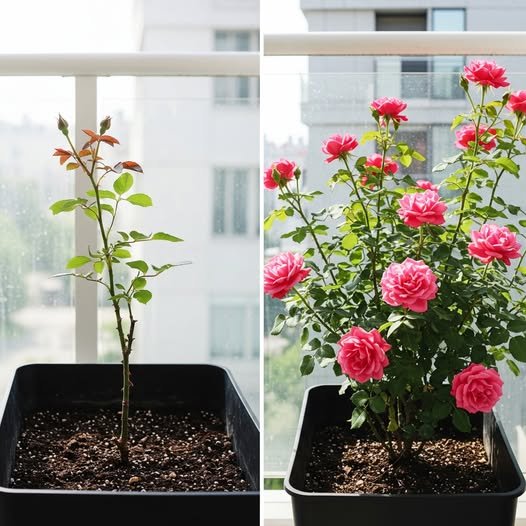Roses are cherished worldwide for their beauty, fragrance, and symbolism—but propagating and growing them successfully at home can be a challenge. However, one surprisingly simple household ingredient may be all you need to transform your rose propagation efforts: plain white rice.
Yes, just one spoon of rice can make a remarkable difference in how quickly your rose cuttings take root, grow, and even bloom. This easy, affordable, and organic method taps into the natural power of rice to support plant growth without synthetic fertilizers or chemicals.
In this article, you’ll discover how to use rice effectively to propagate roses, why it works so well, and how to care for your cuttings so they thrive and flower continuously.
Why Rice Helps Roses Grow
Rice contains a rich combination of starch, vitamins, minerals, and trace nutrients that support plant development. When applied correctly to rose cuttings, rice promotes faster root formation and stronger early growth. Here’s what makes rice so effective:
- Starch: Serves as an energy source for cuttings, helping fuel cellular activity during root development.
- B Vitamins (especially B1): Support stress resistance and boost root formation.
- Amino acids and micronutrients: Strengthen plant cells and improve resilience.
These nutrients can be easily accessed by creating a simple rice solution that nourishes rose cuttings during their critical rooting stage.
Materials You’ll Need
- 1 tablespoon of uncooked white rice
1 glass or cup of clean water
- Healthy rose cuttings (6–8 inches long)
- Small pot or container with well-draining soil or coconut fiber
- Optional: clear plastic bag or dome for humidity
Step-by-Step Guide to Propagate Roses Using Rice
Step 1: Prepare the Rice Solution
Start by placing one tablespoon of uncooked white rice into a clean container. Add about one cup of water and let it sit for 15 to 30 minutes. Stir occasionally or gently crush the rice with a spoon to release more nutrients into the water. After the time is up, strain the liquid and discard the rice grains—you’ll be using only the starchy water.
Step 2: Prepare Your Rose Cuttings
Choose healthy rose stems that are semi-hardwood—neither too green nor too woody. Cut them into 6–8 inch sections with at least 3 nodes (the bumps where leaves grow). Remove any flowers or buds and strip off the lower leaves, keeping one or two leaves near the top.
Step 3: Soak the Cuttings
Place the base of each rose cutting in the rice water for about 2 to 3 hours. This step allows the nutrients to soak into the stem and encourages faster root formation.
Step 4: Plant the Cuttings
After soaking, plant the cuttings in moist, well-draining soil or coconut fiber. Make sure the bottom node is buried, and the top leaves are above the surface. Gently press the medium around the stem to hold it in place.
Step 5: Create a Humid Environment
Cover the pot with a clear plastic bag or place it in a greenhouse-like enclosure to trap humidity. This prevents the cutting from drying out and encourages quicker rooting.
Ongoing Care After Planting
Keep the soil consistently moist (but not soggy), and place the container in a warm area with bright, indirect light. Every 3–4 days, water the plant with a small amount of fresh rice water, especially during the first 2 weeks.
In about 10–15 days, you may notice new leaves starting to emerge—this is a sign that rooting has taken place. Once the roots are well established (usually after 3–4 weeks), you can transplant the new rose plant to a larger pot or directly into your garden.
Encouraging Continuous Blooming
One of the remarkable benefits of this method is not just fast rooting—but also early and frequent blooming. Here’s how to support that:
- Keep feeding with diluted rice water every 2–3 weeks. It works as a natural fertilizer.
- Ensure 6 hours of sunlight daily, especially if the plant is in a container.
- Prune dead or faded blooms to encourage continuous flower production.
- Mulch the base to retain moisture and regulate soil temperature.
With the right care, your rice-propagated rose can bloom multiple times throughout the season.
Conclusion
Using just a spoonful of rice, you can dramatically improve the success rate of rose propagation at home. This method is simple, natural, and ideal for gardeners of all skill levels. With rice water, your rose cuttings can take root faster, grow stronger, and bloom more reliably—without spending money on commercial rooting products or fertilizers.
The next time you’re in the kitchen, think twice before tossing out that rinse water. A small amount of rice might just be the secret to growing a thriving rose garden right in your backyard.



